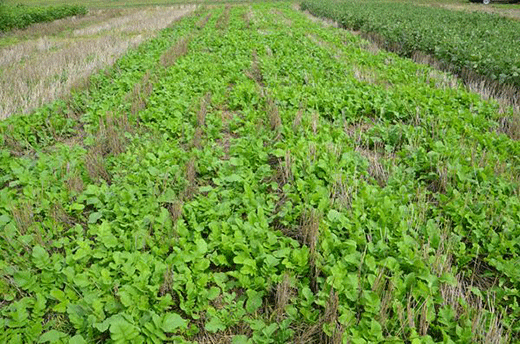Manhattan, Kansas, USA
September 24, 2020
Kansas State University soil management expert calls guide the first of its kind

K-State soil management specialist Deann Presley calls a recent two-year evaluation of 56 commercially-available cover crop varieties "an excellent piece of research."
Crop scientists at three federal labs – including one near Manhattan – have released results of a two-year evaluation of 56 commercially-available cover crop varieties to help farmers pick the best ones for their business.
K-State Research and Extension soil management specialist Deann Presley calls the publication – Evaluation of Cool Season Crops in the North Central Region – an “excellent piece of research” conducted by scientists employed by the U.S. Department of Agriculture and the Natural Resources Conservation Service.
“There is a lot of effort that farmers put in to selecting their cash crop hybrids (such as wheat, corn and soybeans),” Presley said. “But as far as cover crops go, we just don’t have that same level of information.
“The scientists at the (NRCS) plant material center have put in the work to do real evaluations of multiple types of cover crops to give them ratings for various properties.”
The publication is available online, and was one of the topics addressed in a recent issue of the K-State Agronomy eUpdate.
Presley notes the publication covers such important topics as how quickly a given fall cover crop will establish, its ability to survive the winter, maturity date, and insect and disease ratings.
“It’s all important information to have,” she said, “but in particular, I think winter survival is a pretty important one. The big question is how quickly can you get it seeded and how well does that establish.”
Among the varieties evaluated so far, “each has its pros and cons,” Presley said.
“Kansas growing conditions are varied; there is not one or two cover crops that are suitable for the entire state,” she said. “In addition to information in this publication, it’s important to work with local seed dealers, coops and other agricultural retailers to fine-tune cover crop selections to determine which one’s have been doing well in your local area.”
Presley has specialized in growing cover crops for 13 years and said this is the first time she has known in which a publication is available that provides key characteristics of a wide variety of fall crops.
“The questions never stop and we just keep exploring different ways and new things to research,” she said.
To keep up on this and many other crop-related topics, interested persons are urged to subscribe to the free Agronomy eUpdate, which is available weekly from Kansas State University.